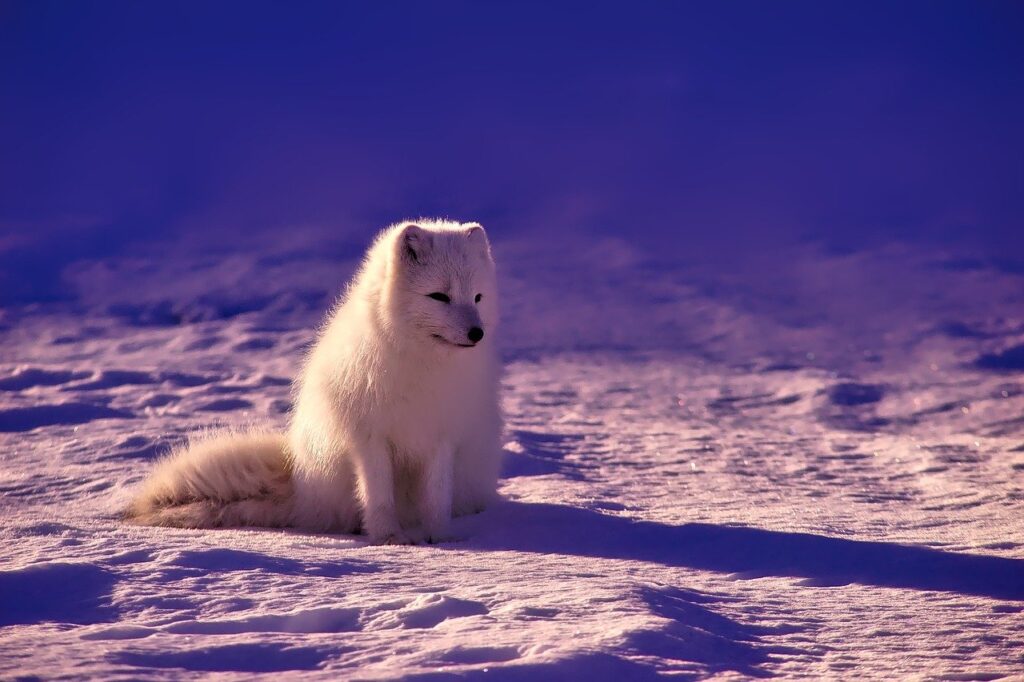Animals come in all sorts of shapes, colors, and sizes. They have different features, too.
For example, the ends of their limbs – some have human-like hands, others have hooves, and there are even animals with suction cups; this article will focus on animals with adorable, lovable paws.
African Lion
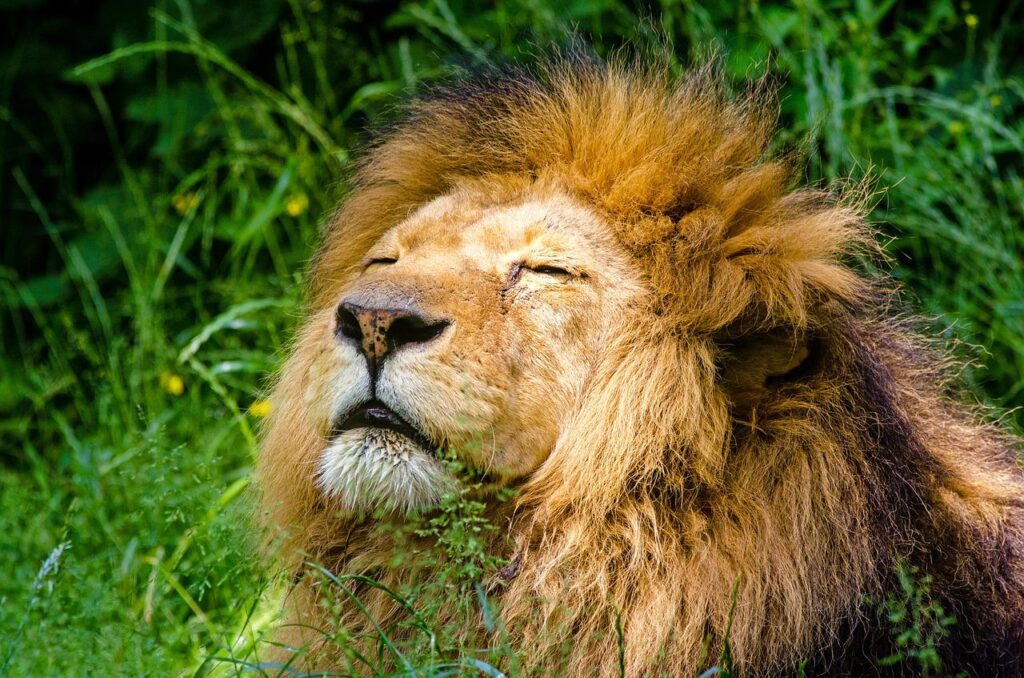
The African Lion is one of the world’s largest cats, with male lions being about eight and third feet long (from head to the tip of tail) and weighing in at a whopping 400 pounds!
This fearsome predator inhabits eastern and southern Africa and certain parts of India.
Another interesting feature of lions is their strongly expressed sexual dimorphism, meaning male and female lions exhibit visible physical differences regarding their sex.
Male lions are generally larger and sport large, voluminous manes, whereas female lions are generally somewhat smaller than
their male counterparts and do not have manes.
Lions also have social groups called “prides”. Generally speaking, prides consist of related individuals and their offspring and are fairly insular having about 15 adult male lionesses and 4 or 5 adult male lions and cubs of both sexes.
When male cubs reach maturity at 2-3 years of age, they are excluded from the pride and set out on their own. Also, lions love to cuddle and spend time resting
together in the shade! Its paws help it move quickly and quietly through the savanna.
Bengal Tiger

Another iconic big cat is, of course, the Bengal Tiger.
Its orange and black striped coat is not only stylish and instantly recognizable (great branding there, tigers!), but it also serves a practical purpose of concealing the tiger in the forest breaks up its silhouette, making it harder to see.
Bengal Tigers inhabit regions of India, Bangladesh, Nepal, Bhutan, and southwestern China.
Bengal Tigers are featured prominently in many mythologies as symbols of strength and power and as dangerous human threats.
This is no wonder since tigers are apex predators and will hunt most species in their territories. An adult tiger can eat up to 88 pounds of meat in a single meal!
Their paws are also an important part of their hunting kit, as they help them carry their 500 pounds of weight silently.
Cougar
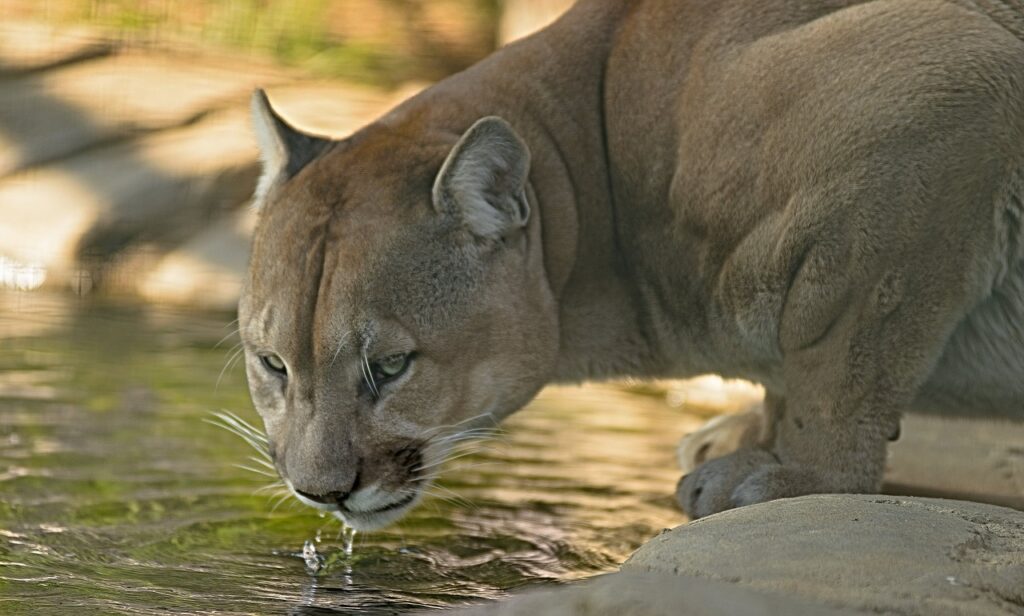
The cougar is native to the American continent and inhabits primarily mountainous regions, hence its other name, Mountain Lion.
Cougars are significantly smaller than African or Asian wild cats but are no less impressive as predators in their habitats.
Cougars are primarily nocturnal creatures, preferring to hunt in the nighttime when their advantages of having sneaky, quiet paws and excellent vision in the dark are most useful.
However, cougars have also exhibited crepuscular (twilight-hour activity) behavior. Also, adorably, cougars are most
closely related to Felis catus, ordinary house cats!
Their paws help them sneak quietly through mountains and forests; paws also protect their claws.
Jaguar

Closing out the section of big cats, we have the one, the only – Jaguar!
The Jaguar is the largest cat species in the Americas and sports a coat stylish enough to rival the tiger.
Jaguars live primarily in forests and enjoy napping in trees during the day, waking up at twilight or at night to go on the prowl.
The Jaguar is a unique hunter in that its bite is powerful enough to pierce skulls and tortoise shells, unlike other large cats, which cannot bite
through bone.
Additionally, contrary to stereotypes about cats, Jaguars are excellent swimmers and love playing in the water! Jaguars are also largely solitary animals, except for females and their cubs.
However, there have been reported sightings of jaguar families in the wild. Their paws help them sneak around and protect their
claws when they’re not being used for climbing or hunting.
Grizzly Bear
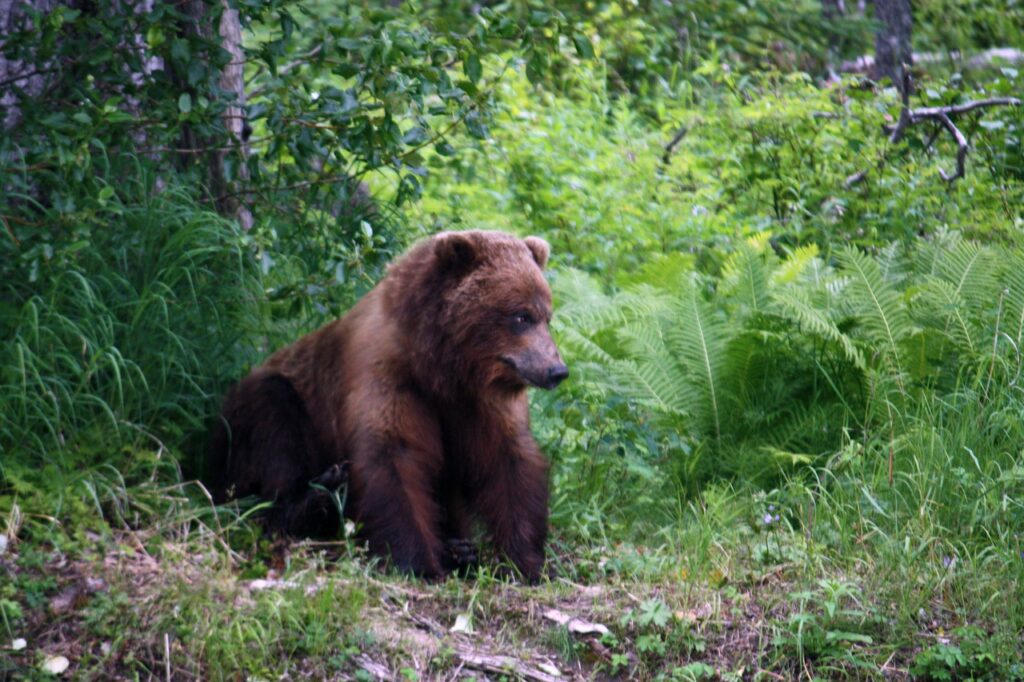
The Grizzly Bear is a bear that inhabits the North American continent.
Their name does not come from their fear-inspiring nature, but the word “grizzly” really means “silver-tipped or grey-tipped hair“, which describes their fur as the light, silvery tips on the backs of these animals.
Grizzlies are omnivorous animals consuming meat and plants as part of their diet. Some of their favorite treats include salmon, blueberries,
American Black Bear
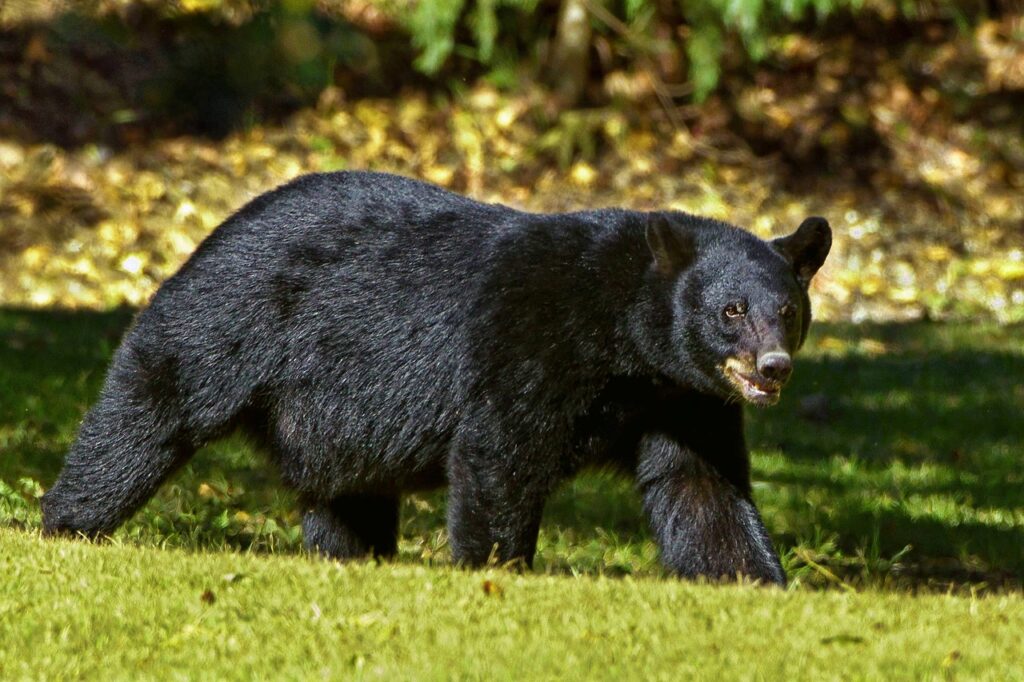
The American Black Bear, or just black bear, is the most widespread bear species endemic to North America. As far as bears go, they are about medium-sized – not as big as grizzlies, but not as small as sun bears.
These bears are incredibly versatile animals, able to adapt to changes in circumstances and environment quickly. Black bears are omnivores (they eat both plants and meat), and their diet varies greatly depending on the season.
Also, black bears are renowned for their excellent climbing skills; they can easily climb trees, scale cliffs, and sometimes even get on the roofs of buildings!
Black bears, like their grizzly cousins, also hibernate during the year’s cold months.
During hibernation, cubs and mothers stay together for warmth and safety. The black bear’s paws help it climb trees and mountains.
Sun Bear
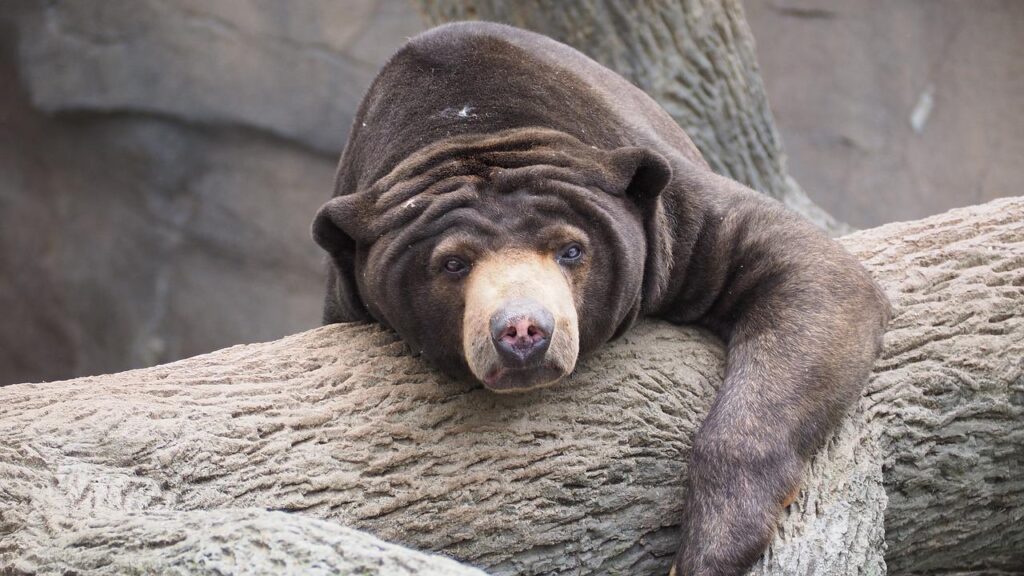
The Sun Bear is the smallest species of bear on Earth, standing at only 28 inches tall at the shoulder and weighing only up to 130 pounds. They live in the tropical forests of southeast Asia, their habitat is almost completely arboreal, and their paws help them climb trees.
They have a distinctive spot on their chest, which looks like a sun, hence their name. Another unique feature of the sun bear is that they do not hibernate.
Scientists suppose this is because food is easily available year-round in their habitats. A similarity between sun bears and other bears is that they are omnivorous, preferring bugs, ants, termites, honey, and fruit to other kinds of food.
Giant Panda

The Giant Panda (or just simply panda bear) is a species of bear that is endemic to China. The most prominent defining feature of the giant panda is its coat.
The coat is white except for the ears, limbs, and eyes, all covered with black fur.
Even though they are related to bears, giant pandas almost do not eat meat.
In the wild, their diets consist almost entirely of bamboo leaves and shoots; their paws even have special growths to help the bear grasp bamboo more effectively.
Polar Bear
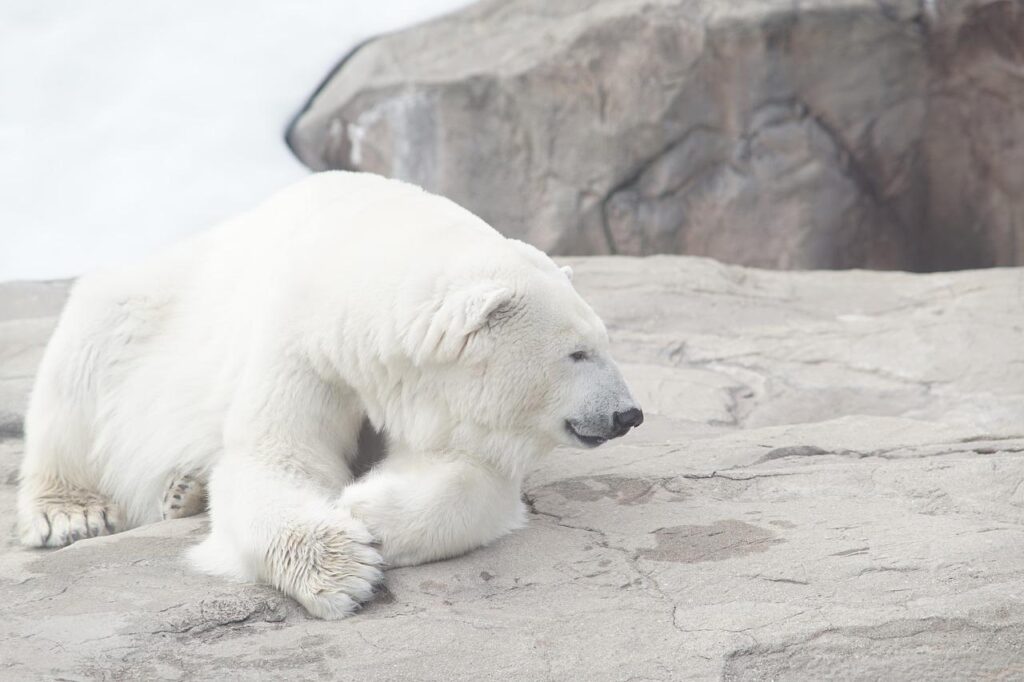
Save the best for last, huh?
Well, rounding out the bear section is the Polar Bear, a definite contender for the title of best bear.
The polar bear is the largest existing species of bear and is also endangered. Because of global warming, their habitat is being destroyed as more and more ice melts from Earth’s polar caps.
These majestic creatures are closely related to the grizzly bear but have evolved to fit a more niche role. Their scientific name, Ursus maritimus, means “maritime bear” and it was given to this bear, not in vain.
The polar bear is an excellent swimmer and depends on sea ice for survival, making it a sea mammal. Additionally, the polar bears are powerful marine predators, feeding on fish and seals alike. Their paws allow polar bears to paddle water more effectively.
Wolf

The wolf, also known as the grey wolf, is a canine species native to North America, Europe, and Asia. Wolves are highly social creatures, living in packs with a parental unit and their offspring in the wild.
The term “alpha wolf” is fictitious, and the scientist who coined it fought against its usage. Wolves are very effective pack hunters, cooperating to bring down their prey.
In mythology and storytelling, wolves are often portrayed as a symbol of danger and peril, but in reality, wolves are more scared of humans than humans are of wolves. Wolf paws help wolves not fall through the winter snow by distributing their weight better.
Coyote
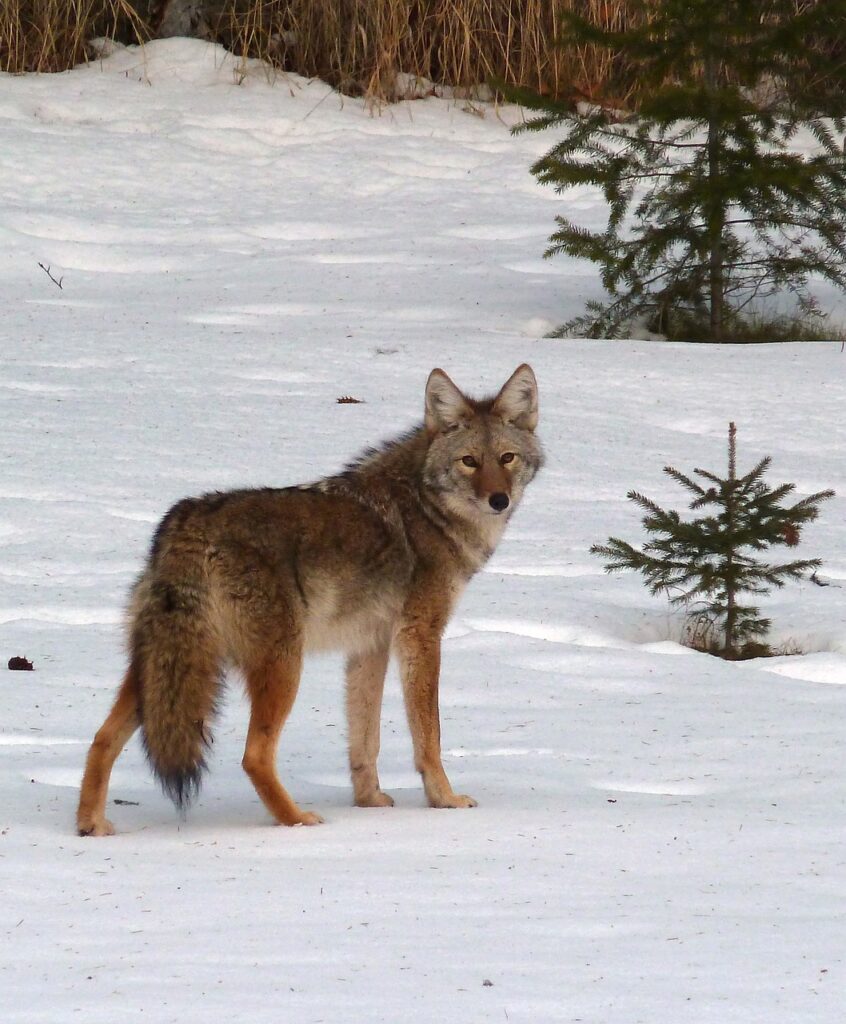
Coyotes are closely related to wolves and are native to North America. They are very common, and their population is
numerous.
Coyotes live in packs, but unlike wolves, their model of social organization is very loose and fluid.
Coyotes are often depicted as clever tricksters in Native American storytelling, often shape-shifting
between the animal form of a coyote and the human form of a man.
In the wild, coyotes are most threatened by humans, cougars, and certain species of wolves.
However, there are documented instances of coyotes mating with wolves, producing “coywolf” hybrids. Coyotes’ paws help them stalk their prey quietly until they’re ready to attack.
Red Fox
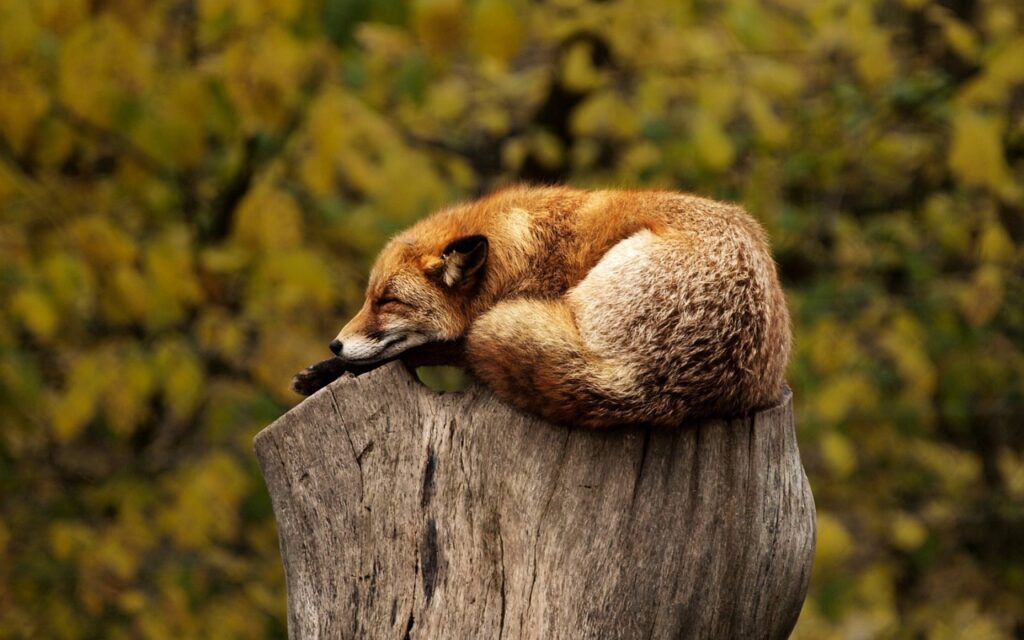
The red fox is a “true fox” (a member of the genus Vulpes) and lives all over the Northern Hemisphere. Red foxes are omnivorous animals with a varied diet. Foxes often prey upon rodents such as voles, mice, hamsters, woodchucks, and squirrels.
Additionally, foxes enjoy all different kinds of berries, grapes, and grasses. Red foxes, in folklore, are often depicted hunting and eating birds, but this is rarer than them eating rodents or plants.
Foxes also have closely-knit families with a mating pair often staying together for life, and their more mature young helping raise newborn kits.
Foxes’ paws help them not fall through snow and let them move quietly through their environments.
Arctic Fox

The Arctic Fox, much like its name suggests, inhabits the arctic regions of the Northern Hemisphere. It is closely related to the red fox but differs in certain key ways.
Most obviously, the arctic fox’s coat is white to help it blend in with the snow, and its coat is also much thicker and warmer than the red fox. Arctic foxes’ primary food source is lemmings, whom they prey upon.
Like red foxes, arctic foxes are also monogamous, mating for life with both parents helping raise their offspring.
The most important function of an arctic fox’s paws is to help it not fall through the snow!
Capybara
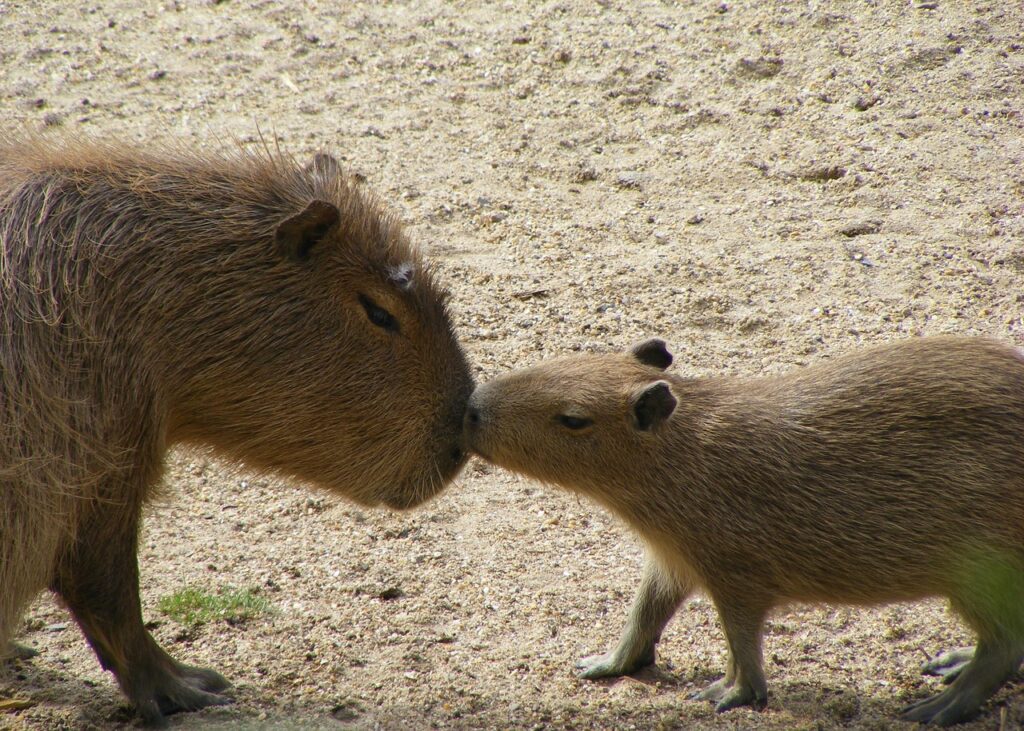
Capybaras are the largest living rodents on Earth!
They are related to guinea pigs and cavies. Native to South America, they eat grasses and aquatic plants primarily. They are social animals, living in groups of ten to twenty capybaras; each can live up to 10 years in the wild.
They also have thick, coarse fur that helps protect them from the environment and predators. Capybaras often use their paws to dig in the ground for food and allow them to paddle water when they go for swims.
Red Panda

The Red Panda is a unique mammal native to the eastern Himalayas and southwestern China. They are not related to giant pandas, but they share the trait of special growths on their paws, allowing them to grab bamboo more effectively.
Red pandas have been observed to be solitary and territorial as well as nocturnal. Red pandas are highly adapted to an arboreal lifestyle – they even sleep in the trees!
Their diet consists primarily of bamboo.
Domestic Animals With Paws
House Cat

Some say that dogs are man’s best friend, but cats are widely loved and favored, too. These furry friends are not only incredibly cute, but they also are the only domesticated species of cat in the world!
Cats are solitary hunters, but they are a social species, crossing the line of species to be friends with humans and other animals (like dogs or farm animals).
Cats communicate through various vocalizations – meowing, purring, hissing, growling, and even grunting. Cats also give little social “kisses” by touching their noses before social grooming, or in the case of humans and cats, they boop the human with their nose before letting themselves be pet.
Their paws help them be extra quiet when they move.
Dog

Dogs are among the first animals domesticated by humans. Since dogs have been with humans for a long time, they are often called “man’s best friend”. Dogs are descendants of the extinct, ancient wolf, and their closest relative is the modern grey wolf.
Throughout history, dogs have been bred for specific behaviors and traits to aid in hunting, law enforcement, emergency response, therapy, and helping disabled people.
Though dogs evolved from carnivores, in modern times, most thrive on a starch-rich diet of dog food. The dog’s paws protect its feet when it’s running around.
Hamster
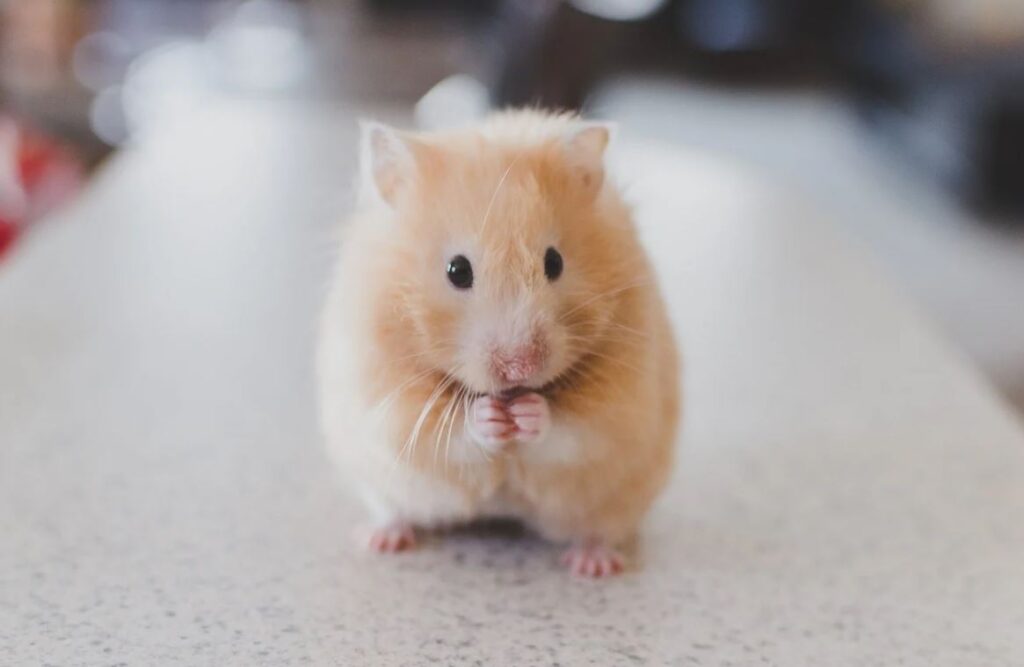
Hamsters are found in the wild but also are made for popular pets. One of their special traits is large cheek pouches that can stretch as far back as their shoulders, which hamsters use to carry food back to their burrows.
Their diet consists primarily of nuts, seeds, and berries, but hamsters have been known to eat burrowing insects in the wild. They are also primarily nocturnal creatures, emerging from their burrows at night to forage for food. Hamsters use their paws to burrow in the ground to make their burrows and dens!
Ferret
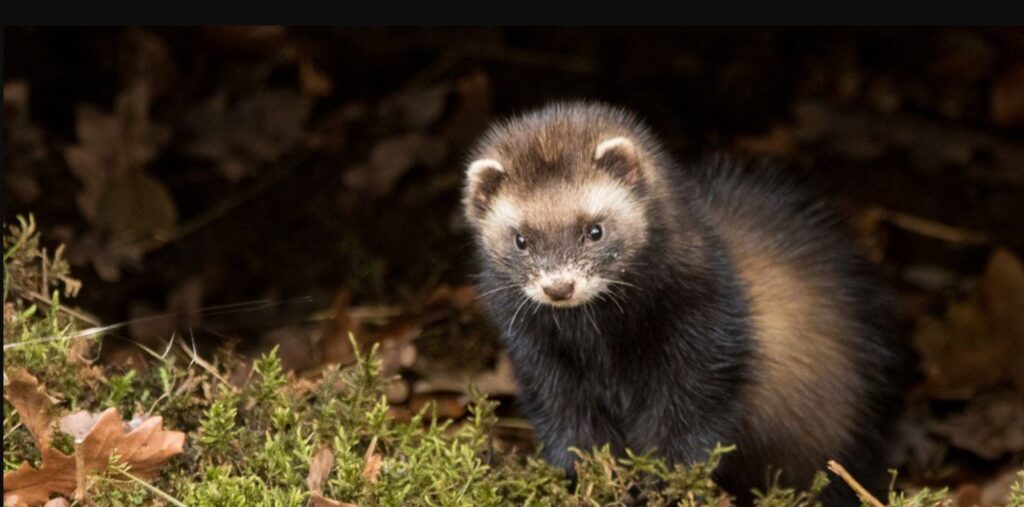
Believe it or not, ferrets are a very popular pet, and they have been since ancient times! These squiggly, wiggly fuzzy noodles are wonderful pets because they’re incredibly smart and playful. In ancient and medieval times, trained ferrets were used for hunting rabbits, but today ferrets are used to help patients with narcolepsy.
Additionally, ferrets have lent a hand (or a paw, one might say) in researching infectious diseases, particularly influenza. Ferrets can stand up on their hind paws to dance and wiggle when excited! They also use their paws to climb.
Rat
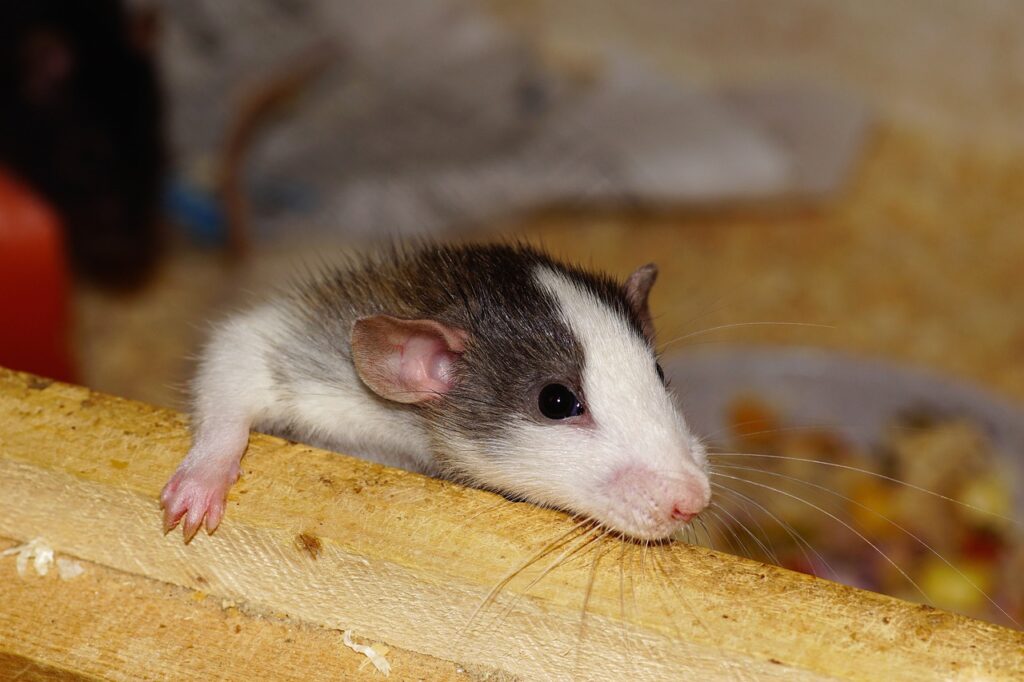
Rats are medium-sized rodents that live all around the world. They make great pets as they are fairly easy to care for and very smart and playful. Furthermore, rats’ contributions to science are immeasurable!
Everything from cardiovascular science to psychology has involved rats in research. Rats also have been found to have metacognition (the ability to recognize thought processes and patterns behind them), a trait thought to only present in humans and primates.
Rats use their paws to dig through the ground and hold food items while eating.
Why do animals have paws?
Why do animals have paws? Well, as we’ve seen in all of these examples, paws have a variety of functions – from helping predators sneak quietly through the environment, or helping wolves and foxes not fall through the snow, or allowing rodents to burrow.
Paws are a powerful and helpful evolutionary tool that developed in these animals. Not to mention, paws are totally cute!

